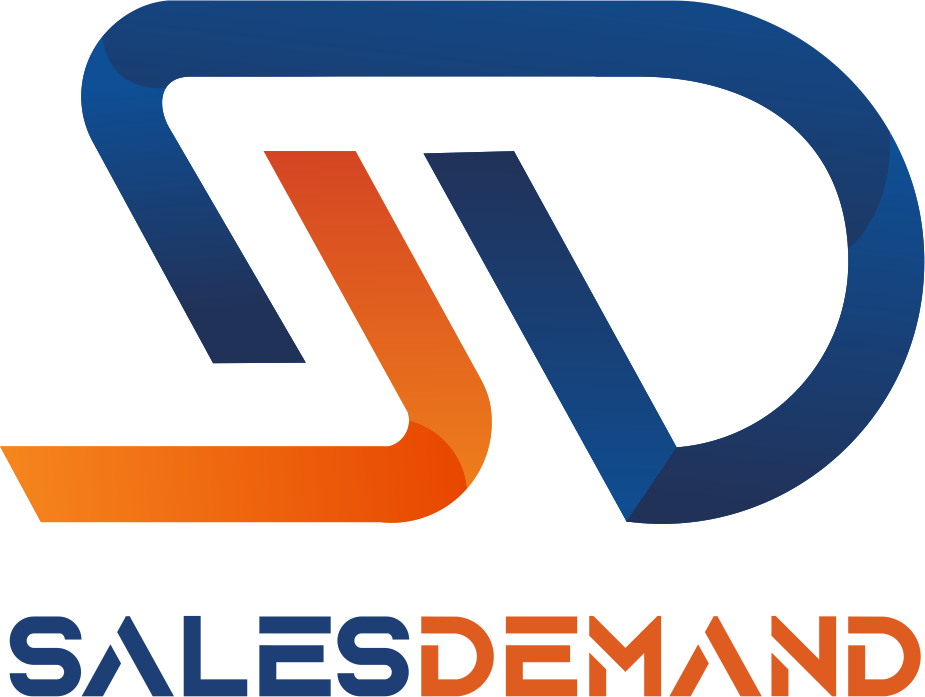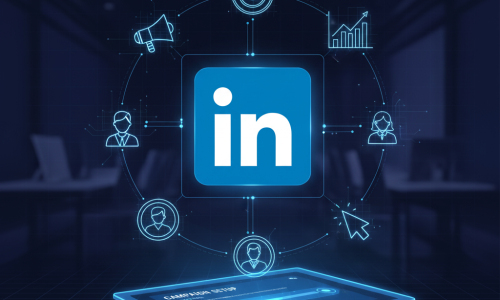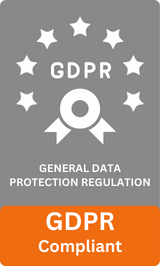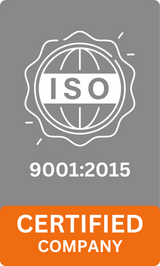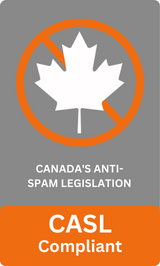
“Successful lead generation is a journey, not a destination. It’s about continuously optimizing your strategies based on data and feedback.”
– Mark Wilson
Lead generation is one of the most critical activities for any B2B company aiming for sustainable growth. In 2025, businesses will face more competitive environments, emerging technologies, and shifting buyer expectations. To capture quality leads, B2B companies need to adapt and leverage modern lead generation strategies. The right approach can help businesses develop relationships with high-value prospects, optimize conversion rates, and scale their efforts.
This blog will explore key lead-generation strategies for 2025, offering actionable insights that will allow you to boost your business. Whether you’re starting from scratch or refining your existing lead generation tactics, the following strategies will serve as a roadmap to drive success.
Table of Contents
ToggleWhat is Lead Generation?
Before diving into the top strategies, it’s important to clarify the concept of lead generation. In simple terms, lead generation refers to the process of attracting and converting potential customers into leads who express interest in your business’s products or services. In a B2B context, this often involves targeting other businesses, engaging decision-makers, and nurturing relationships to drive sales.
The primary goal is to move prospects through a defined sales funnel—from awareness to consideration and ultimately, conversion. Effective lead-generation strategies are key to ensuring your pipeline remains full of qualified leads ready to engage with your sales team.
Why is Lead Generation Important for B2B Businesses?
B2B lead generation is crucial because it serves as the first step in converting potential business customers into paying clients. Without a steady stream of leads, businesses struggle to scale and generate revenue. Here’s why lead generation is critical for B2B companies:
- Building a Sales Pipeline: Effective lead generation strategies help build a pipeline that ensures businesses always have potential clients to target.
- Maximizing ROI: Targeting the right prospects allows companies to allocate resources more effectively, ensuring that marketing dollars are spent wisely.
- Sustaining Business Growth: Consistent lead generation efforts ensure that your business continues to grow by attracting new customers and expanding market reach.
Differences Between B2B and B2C Lead Generation
While lead generation is critical for both B2B and B2C businesses, the approaches can differ significantly. Understanding these differences will help you tailor your lead-generation strategies to meet the needs of your target audience.
Key Differences:
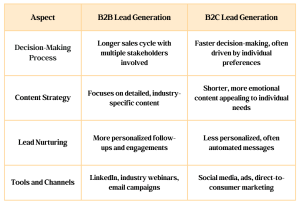
Understanding these differences allows B2B businesses to optimize their strategies for lead generation, providing a more tailored and effective approach to their audience.
Top 10 B2B Lead Generation Strategies
Now, let’s dive into the top 10 B2B lead generation strategies that can help your business thrive in 2025.
1# Harness the Power of Content Marketing
Content marketing is at the core of modern B2B lead generation strategies. Offering valuable and informative content such as blog posts, whitepapers, and webinars allows your company to establish itself as an authority in its field.
Benefits of Content Marketing for Lead Generation:
- Educate potential clients about your product or service.
- Improves SEO by driving organic traffic to your website.
- Positions your business as an industry thought leader.
To be successful, focus on creating high-quality, in-depth content that addresses common pain points and questions within your target industry. In 2025, businesses will need to prioritize content that is not only informative but also engaging and shareable.
2# Leverage Marketing Automation Tools
Marketing automation is one of the best ways to scale your lead-generation efforts without overwhelming your team. Tools like HubSpot, Marketo, and Salesforce allow you to automate email campaigns, segment your audience, and nurture leads efficiently.
How Marketing Automation Helps:
- Streamlines repetitive tasks like sending follow-up emails and social media posts.
- Delivers personalized messages at scale based on user behavior.
- Provides real-time analytics to track the performance of your campaigns.
Using marketing automation ensures your business stays top of mind with potential clients, even when your team is busy focusing on other important tasks.
3# Optimize for SEO (Search Engine Optimization)
SEO remains a crucial aspect of B2B lead generation strategies. In a world where 75% of buyers use Google to find solutions, ranking well for relevant search terms will boost your visibility and drive organic traffic to your website.
SEO Best Practices for 2025:
- Keyword Optimization: Target long-tail keywords specific to your industry.
- Local SEO: Optimize your site for local search if your business serves a specific region.
- User Experience (UX): Focus on improving the website’s loading speed and mobile optimization.
Ranking high on search engines makes it easier for potential leads to find your business when they need it most.
4# Build Strong Social Media Campaigns
In 2025, social media will continue to be a dominant force in lead generation. Platforms like LinkedIn, Twitter, and Facebook are essential for connecting with your target audience and showcasing your expertise.
How Social Media Benefits B2B Lead Generation:
- Direct Communication with potential leads through messaging and comments.
- Organic Reach via regular content sharing.
- Paid targeted ads to focus on specific decision-makers.
Leveraging social media’s power enables you to engage directly with leads, build relationships, and nurture them through your sales funnel.
5# Account-Based Marketing (ABM)
Account-based marketing targets specific companies rather than individual leads. It focuses on personalized marketing campaigns for high-value accounts that are likely to convert into customers.
Benefits of ABM for B2B Lead Generation:
- Highly Targeted Approach: ABM targets decision-makers within specific organizations.
- High ROI: Since you’re focusing on high-value clients, the return on investment is usually higher.
- Aligns Sales and Marketing: Sales teams can work closely with marketers to tailor content and messaging for each account.
ABM is an incredibly effective strategy when you have a niche market or are targeting large enterprises that can offer substantial revenue.
6# Webinars and Virtual Events
In 2025, webinars and virtual events are not just a passing trend; they’re essential components of a comprehensive lead generation strategy. Hosting webinars on trending industry topics provides an opportunity to engage directly with your audience and generate high-quality leads.
How Webinars Drive Lead Generation:
- Interactive Engagement: You can interact with leads in real time, answering their questions and addressing their concerns.
- Data Collection: Attendees often register by sharing their contact details, which gives them access to valuable lead data.
- Content Repurposing: Record your webinars and repurpose them into blogs, case studies, and social media content.
Offering a platform for education and thought leadership helps build credibility and attract qualified leads who are actively seeking solutions.
7# Paid Advertising (PPC)
Paid advertising through platforms like Google Ads and LinkedIn Ads allows you to target highly specific audiences based on demographics, job titles, interests, and more.
Why Paid Advertising Works for B2B Lead Generation:
- Immediate Results: Unlike organic strategies that take time, PPC ads drive traffic to your site almost immediately.
- Highly Targeted: You can target leads based on specific criteria such as industry, job function, and location.
- Remarketing Opportunities: PPC enables you to retarget visitors who have interacted with your business previously.
When done correctly, PPC campaigns can yield a high ROI by attracting the right leads to your business.
8# Email Marketing for Lead Nurturing
Email marketing remains one of the most reliable ways to nurture leads and drive conversions. With tools like Mailchimp and ActiveCampaign, businesses can segment their email lists and send targeted, personalized messages to prospects at different stages of the funnel.
Benefits of Email Marketing:
- Personalized Communication: Tailor messages based on lead activity and interests.
- Automated Drip Campaigns: Send a series of emails to guide leads toward conversion.
- Increased Engagement: Direct and personal communication fosters stronger relationships.
Effective email marketing strategies can help you stay in touch with leads and move them closer to a purchase decision.
9# Influencer Marketing for B2B
B2B influencer marketing has gained significant traction in recent years. By collaborating with industry experts and thought leaders, you can amplify your message and build credibility in your niche.
How to Use Influencer Marketing for Lead Generation:
- Partner with industry leaders to create content, such as blog posts or video interviews.
- Promote your webinars or virtual events through influencer channels.
- Leverage influencers to expand your reach and drive traffic to your website.
Building relationships with influencers allows you to access their network and generate leads through their trusted recommendations.
10# Customer Referral Programs
Referral marketing remains one of the most effective and budget-friendly lead-generation strategies. Encouraging existing customers to refer new clients can help your business generate high-quality leads with a higher likelihood of conversion.
How to Implement a Referral Program:
- Offer incentives for both the referrer and the referred.
- Promote the program across your communication channels.
- Simplify the referral process to make it easy for customers to participate.
Referral programs leverage the trust that existing customers have built with others, creating a low-cost, high-impact lead generation strategy.
How to Choose the Right Lead Generation Strategy for Your Company?
Choosing the right lead generation strategy for your company can often feel like navigating a maze. With so many options available, it’s easy to feel overwhelmed. However, selecting the most effective strategy is crucial to your company’s growth, and the right approach can help optimize your resources and increase conversion rates.
Choosing the right strategy requires a focus on your audience, industry, resources, and goals, as outlined below:
1# Understand Your Target Audience
The first step in choosing the right lead generation strategy is to clearly understand your target audience. Ask yourself: Who are you trying to reach, and what are their needs? Are you targeting small businesses or large enterprises? Are they primarily located in a specific region or globally? Understanding the demographics and behaviors of your audience will guide you in selecting the best strategy.
How to Determine Your Target Audience:
- Create buyer personas: These detailed profiles represent your ideal customers, including their job titles, goals, challenges, and buying behaviors.
- Use data analytics: Analyze data from your existing customer base, website traffic, and social media engagement to identify patterns.
- Segment your audience: Different segments may require different tactics. For example, larger enterprises might respond well to account-based marketing (ABM), while small businesses might prefer more accessible content marketing or social media outreach.
2# Evaluate Your Industry and Competition
The success of a lead generation strategy depends on the industry, as different industries have unique norms, challenges, and expectations. For instance, B2B technology companies may benefit from content marketing and SEO for technical information, while creative agencies may benefit from social media campaigns and influencer marketing.
Questions to Ask Yourself:
- What are your competitors doing to generate leads?
- Are there any industry-specific regulations or guidelines that affect how you can engage with prospects?
- What content do your target customers find most valuable (e.g., blogs, whitepapers, case studies)?
Once you have this information, you can better tailor your approach to stand out in the market and use strategies that are proven to work in your field.
3# Assess Your Company’s Resources
The choice of lead generation strategy depends on available resources. Some strategies require more time, effort, and skilled personnel, while others, like PPC advertising or marketing automation, may require financial investment but yield immediate results.
Questions to Consider:
- Do you have a dedicated marketing team, or are you working with limited resources?
- How much budget can you allocate to paid campaigns or advanced tools?
- Do you have the time to produce high-quality content regularly?
If you have limited resources, it might be wise to focus on organic strategies like SEO or content marketing, which require time but are cost-effective. Alternatively, if you have a substantial budget, PPC campaigns or social media ads can help you generate quick leads and scale faster.
4# Define Your Business Goals
Your lead generation strategy should align with your overall business goals. Are you looking for short-term gains, such as immediate leads to increase revenue? Or are you focused on long-term relationship-building, where trust and authority are key? Identifying whether your company needs a quick solution or a more strategic, long-term approach will help you narrow down the most effective lead generation strategy.
Goal-Oriented Strategy Selection:
- Short-Term Goals: If your goal is to generate immediate leads or boost sales in the next quarter, you might consider tactics such as PPC ads, retargeting, or social media campaigns.
- Long-Term Goals: For sustainable, long-term lead generation, strategies like content marketing, SEO, and account-based marketing (ABM) can help you build an ongoing pipeline of qualified leads.
By aligning your strategy with your goals, you can set clear metrics for success and focus your efforts on tactics that drive the results you want.
5# Test and Optimize Your Strategy
Once you’ve selected a lead generation strategy, it’s important to continuously test and optimize it. Even if a strategy works well initially, you should always seek opportunities for improvement. A/B testing, performance tracking, and continuous analysis will allow you to make data-driven decisions and refine your approach.
How to Test and Optimize:
- Set up KPIs (Key Performance Indicators): Track metrics like conversion rates, cost-per-lead (CPL), and return on investment (ROI).
- Use analytics tools: Tools like Google Analytics, HubSpot, or Marketo can help track the effectiveness of your campaigns.
- Adjust strategies based on data: For instance, if your PPC campaign isn’t converting, analyze your ad copy, targeting, and landing pages for optimization.
Regularly optimizing your lead generation efforts ensures that you are always improving and adapting to changing market conditions and buyer behavior.
6# Focus on Multi-Channel Lead Generation
While it’s important to choose a core strategy, combining multiple tactics can enhance your results. Multi-channel lead generation ensures that you’re meeting prospects where they are, whether they’re browsing social media, searching for information, or attending webinars.
Why Multi-Channel Works:
- Reinforces Your Message: When leads encounter your business across different platforms, it builds trust and recognition.
- Broader Reach: By using several channels, you reach a wider audience with varied preferences and behaviors.
- Increased Engagement: Different channels allow for different types of engagement, whether it’s through interactive social media posts, detailed blog content, or personalized email campaigns.
Some companies use a combination of SEO, email marketing, paid advertising, and content marketing to ensure they cover all bases. For instance, you might use SEO to drive traffic to your blog, PPC ads to retarget visitors, and email campaigns to nurture them into customers.
7# Consider Your Sales Cycle
The length of your sales cycle is crucial when choosing a lead generation strategy. B2B sales cycles are often longer due to the complexity of the buying process and multiple decision-makers. Strategies like email marketing and content marketing are effective for longer cycles, while direct tactics like PPC ads or retargeting are beneficial for shorter cycles.
Tailoring Strategies Based on Sales Cycle:
- Long Sales Cycle: Content marketing, ABM, webinars, and email nurturing are ideal as they provide multiple touchpoints and build trust over time.
- Short Sales Cycle: Focus on quick tactics like PPC ads, social media ads, and lead magnets to capture leads quickly and convert them.
Understanding your sales cycle helps you focus on strategies that match the time frame within which your leads are likely to make a purchase decision.
Conclusion
In 2025, the landscape of B2B lead generation strategies will continue to evolve as new technologies emerge and buyer expectations shift. By implementing a combination of content marketing, marketing automation, SEO, ABM, and other tactics, businesses can create a comprehensive lead-generation strategy that drives results. Whether you’re looking to refine your existing strategies or experiment with new ones, these top 10 approaches will ensure that your business remains competitive and poised for success in 2025 and beyond.
FAQ’s
How can social media be used for B2B lead generation?
Social media platforms like LinkedIn, Twitter, and Facebook can be used to share valuable content, run targeted ads, and directly engage with prospects. Building relationships through consistent interaction and thought leadership will help generate leads.
What is account-based marketing (ABM)?
ABM is a strategy that focuses on targeting specific, high-value accounts rather than broad lead-generation efforts. This personalized approach ensures that sales and marketing teams align their efforts to drive conversions from key accounts.
How do I choose the right lead-generation strategy?
The right strategy depends on your target audience, goals, and available resources. A mix of content marketing, email campaigns, and automation can help you reach and nurture prospects effectively.
What role does marketing automation play in lead generation?
Marketing automation helps scale your lead generation efforts by automating repetitive tasks, personalizing communication, and providing analytics to optimize campaigns. It allows businesses to engage with leads at every stage of the sales funnel.
Why are referral programs so effective for B2B lead generation?
Referral programs leverage the trust of existing customers to generate high-quality leads. Customers are more likely to refer others if they have had a positive experience, making referrals a powerful tool for lead generation.
I hope you find the above content helpful. For more such informative content, please visit SalesDemand.
